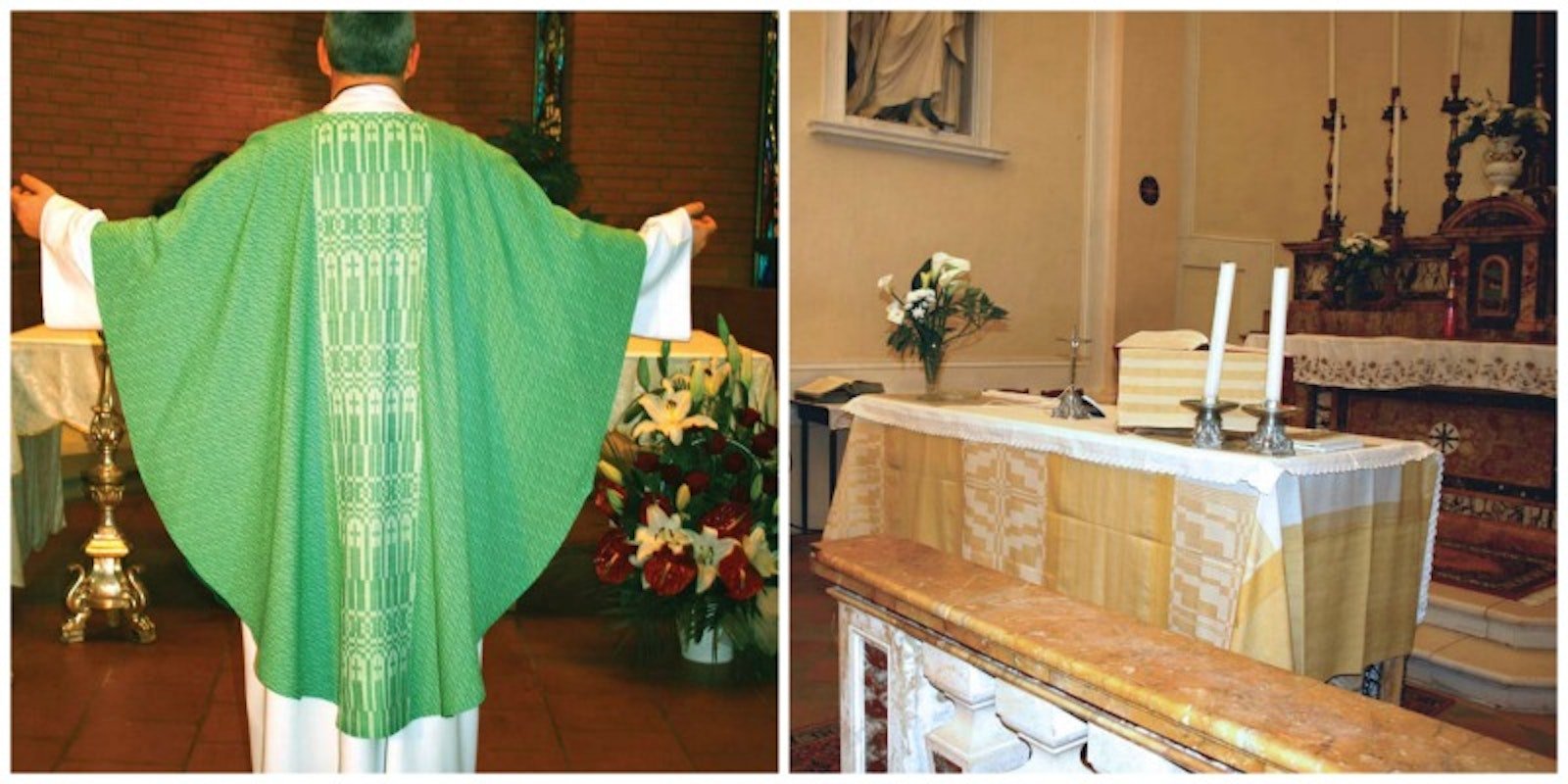Fine in Many Forms
I started weaving forty years ago in Québec, Canada. I was very lucky to study with a wonderful weaver, Soeur Cécile Auger of the Congregation (of nuns) of Notre Dame, with whom I also taught and founded an association of weavers, “Les Tisserands d’Ici,” before I moved to Italy in 2009. In my new country, I continued teaching weaving to people interested in the trade. I am now sixty-five years old and no longer teaching, but I still weave. The older I get, the more I choose to weave with thin fibers, such as fine cotton, linen, and silk because the results are more interesting for me. I also love to combine weave structures because that also produces interesting results.
After my husband and I moved to the Marche region of Italy, I discovered a local textile tradition: for her wedding dowry, a young woman was expected to weave an 8-meter-long cloth called a truscelli that would be made into bedsheets for her new household. This cloth was typically woven in plain weave on a 2- or 4-shaft loom out of fine handspun natural cotton for warp and hemp or linen for weft. I came upon a lovely old truscelli that hadn’t been made into bedsheets and decided to insert a strip of my handwoven silk shadow weave to make a tablecloth. That started me down the path of combining cloth of different weave structures.
Weaving for Worship: Handweaving for Churches and Synagogues by Joyce Harter and Lucy Brusic.
The chasuble came about because the son of one of my husband’s cousins completed seminary and was to be ordained as a priest. Since I love weaving with fine threads, a woven chasuble was an exciting project for me. I used 16/2 pearl cotton for the warp and the weft. I wove the crackle-weave center section on a 4-shaft loom and the shadow-weave fabric on an 8-shaft loom. The book Weaving for Worship: Handweaving for Churches and Synagogues was a great help in figuring out dimensions for the liturgical garment. The young priest liked his gift, and it moved me to create it for him.
I also gave one of my weaving projects to the church in my parish, Sorbolongo Comune di Sant’ Ippolito. I created an altar cloth as well as a cloth for the lectern, also using 16/2 pearl cotton woven in both shadow weave and crackle weave. Weaving a whole altar cloth is quite difficult because it is very wide and a domestic loom is not usually that large. Weaving the cloth in sections solves the problem, and afterward all there is left to do is to sew the parts together. It is true that the use of fine fibers and multiple structures can be time-consuming, but in my opinion, it is gratifying in the end. Just try it!
—Diane
RESOURCES Atwater, Mary Meigs. Recipe Book: Patterns for Handweavers. Salt Lake City, Utah: Wheelwright, 1982. Crackle pattern for chasuble is #9; crackle pattern for altar cloth is #1.
Harter, Joyce, and Lucy Brusic. Weaving for Worship: Handweaving for Churches and Synagogues. McMinnville, Oregon: Robin and Russ, 1998.
Strickler, Carol, ed. A Weaver’s Book of 8-Shaft Patterns. Loveland, Colorado: Interweave, 1991. Shadow weave for chasuble, based on #304, p. 77; shadow weave for altar cloth, #287, p. 73.
Diane Roch-Magrini started weaving forty years ago in Québec, Canada. She now lives and weaves with fine threads in Italy. From Handwoven November/December 2016, page 56.


